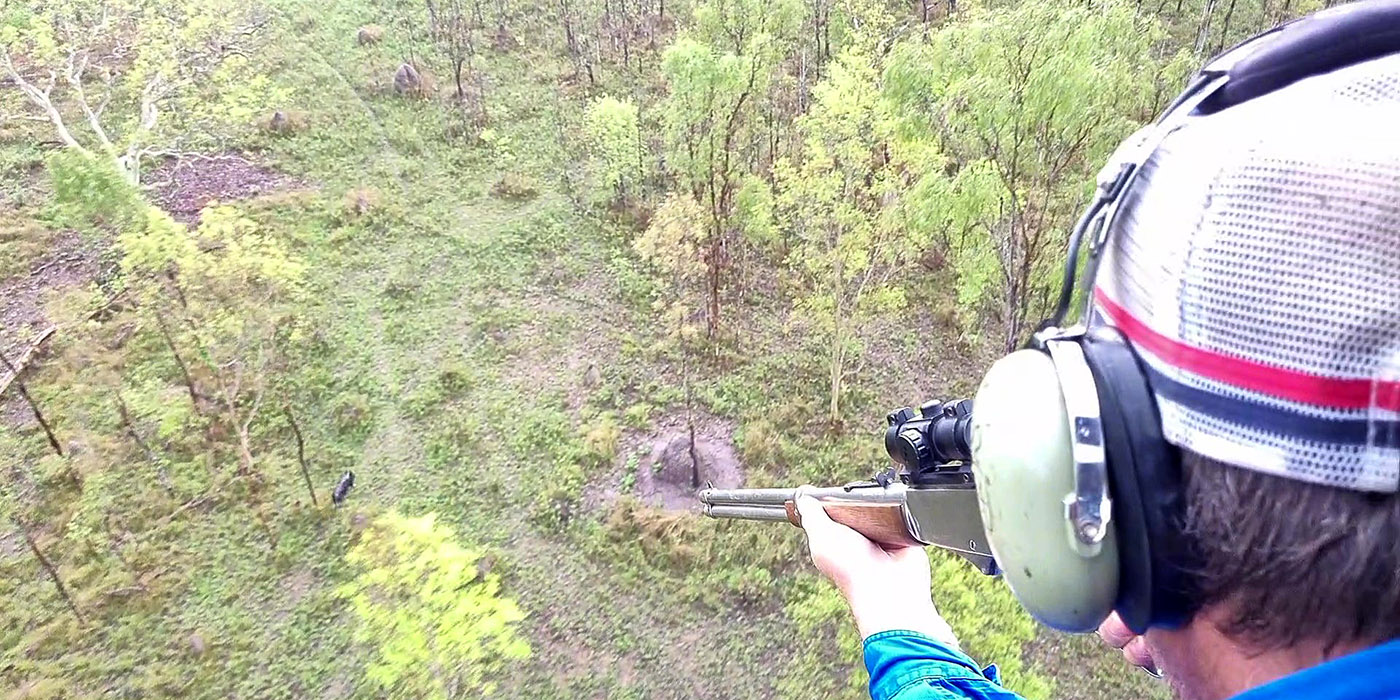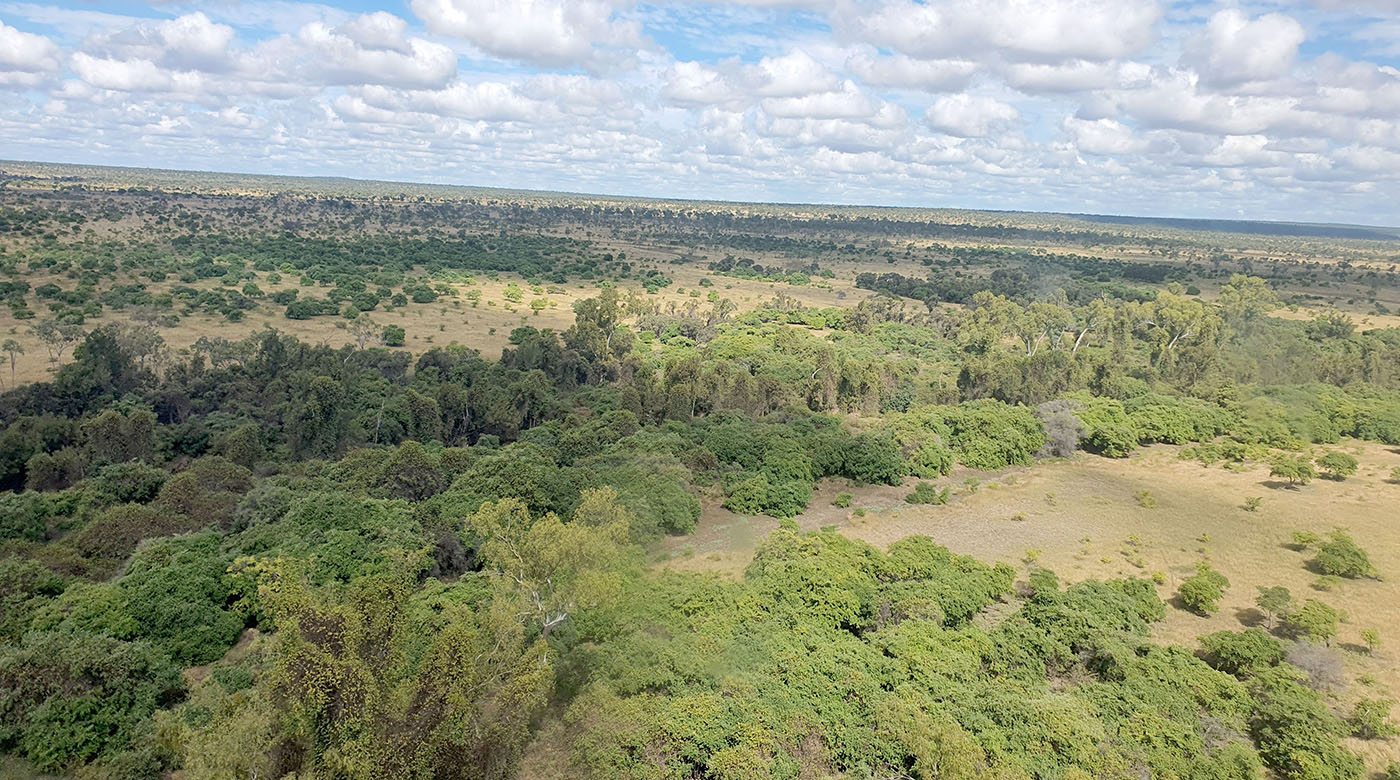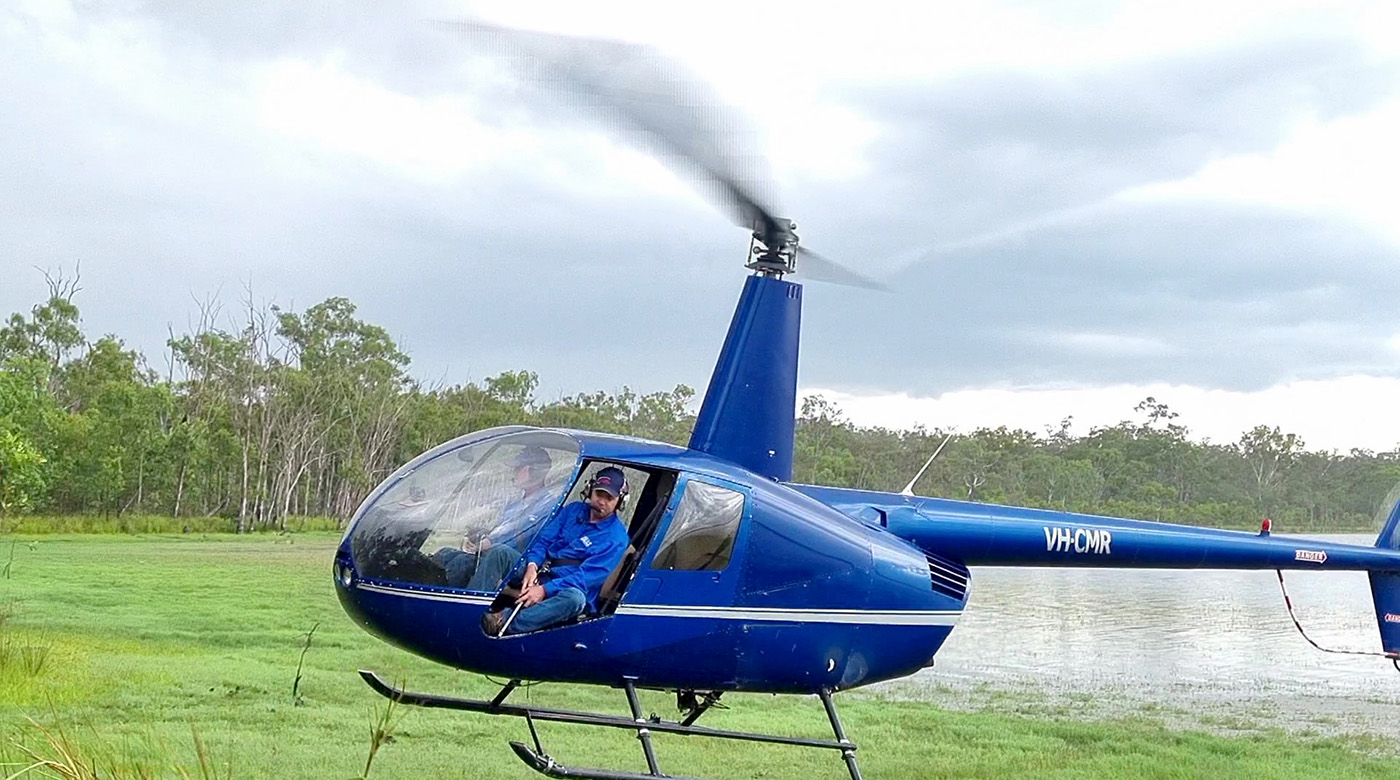Removing ferals to restore natural landscape function

Helicopter pig shoot on Minnamoolka Station… 400 feral animals were removed across six properties in the Upper Burdekin.
More than 600 feral animal pests have been culled from cattle properties north of the Basalt Wall near Charters Towers.
Pigs, deer and feral horses accounted for most of the animals removed from properties during pest management campaigns across two cluster groups.
A cluster of six properties involved in an NQ Dry Tropics biodiversity project organised a contract aerial shooter who removed 438 animals, mostly pigs and deer in January.

The chinee apple and rubbervine infestation along the banks of the Maryvale Creek on Maryvale Station provide shelter to feral animals.
A follow-up shoot in April at Maryvale Station destroyed another 197 pigs in one day.
On Maryvale, particularly, the feral pests were able to shelter in riparian areas made inaccessible by impenetrable infestations of chinee apple and rubbervine.
NQ Dry Tropics Senior Grazing Field Officer Chris Poole said Desert Channels Group (DCG) had a commercial pest control field crew and they had been contracted to tackle the rubbervine and chinee apple problem.
It proved to be a difficult task that required some lateral thinking from DCG’s Operations Manager Simon Wiggins and his team to unlock the puzzle.
Pigs and deer, even feral cats, sheltered beneath the canopy provided by the rubbervine and chinee apple so the initial plan was to remove the canopy and allow grass to re-establish along the banks of Maryvale Creek.
“Once it dried off, the grass would provide fuel for a controlled burn to remove the woody weeds and the opportunity for feral animals to use it,” Mr Poole said.
The fire control would be followed by a spot-spraying campaign to remove any remaining weeds, returning the creek frontage to a natural balance.
Unfortunately, while the rubbervine was susceptible to foliar spraying with metsulfuron, tebuthiuron pellets to target the chinee apple were less successful.
The speed at which the deep loam soil along the creek banks drained, even after heavy rain, meant the tebuthiuron released with the rain did not stay in the root zone for long enough to do its job.
Simultaneous to spraying about 80kms of riparian country facing Maryvale Creek, the DCG crew worked on finding a solution to killing the established old chinee apple trees, some of them more than a metre across the main trunk.
Time was also against them as the active growth phase of the chinee apple trees ended, although it was extended a little by some unseasonal winter rain.
There was enough time, however, to test and prove a high-dose metsulfuron foliar spray and the landholder, armed with that knowledge, is keen to rejoin the battle as soon as rain reactivates the plants.
Mr Poole said, however, the task was beyond the scope of the three graziers whose properties had frontage country along Maryvale Creek.
“Control of pest plants and animals go hand in hand,” he said.
“To be able to manage the feral animal problem, the landholders need to control the invasive plants that have effectively destroyed thousands of hectares of productive country.
“Graziers budget a significant tranche of money each year to combat weeds, but they simply do not have the wherewithal to be able to significantly reduce the core problem.”

Ready to go… contractors carry out a survey and cull operation.
He said the weeds represented an increased water quality risk as without grass cover and exacerbated by the areas dug up by pigs, the creek banks were more prone to erosion, dumping sediment into the waterway that could be carried all the way to the Great Barrier Reef.
He hoped funding would be available to help the graziers continue to win back country from invasive species and be better able to control feral animals as well.
Mr Poole said the landholders had been able to stay on top of the feral animal problem in those areas not completely choked out by rubbervine and chinee apple.
“Four years ago, an aerial shoot accounted for more than 400 deer destroyed within 5kms of the Junction Creek homestead,” he said.
“This year, during a similar sweep, only two deer, 14 pigs and a feral cat were destroyed.”
Properties in the two cluster groups are participating in the Linking Landholders to Frontage country project, delivered by NQ Dry Tropics and funded through the Queensland Natural Resource Investment Program.
